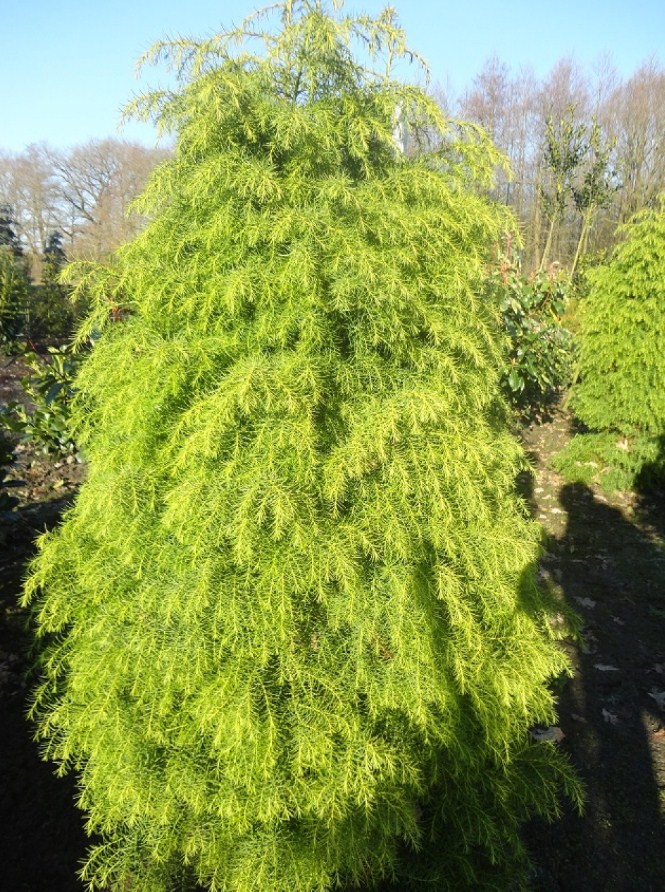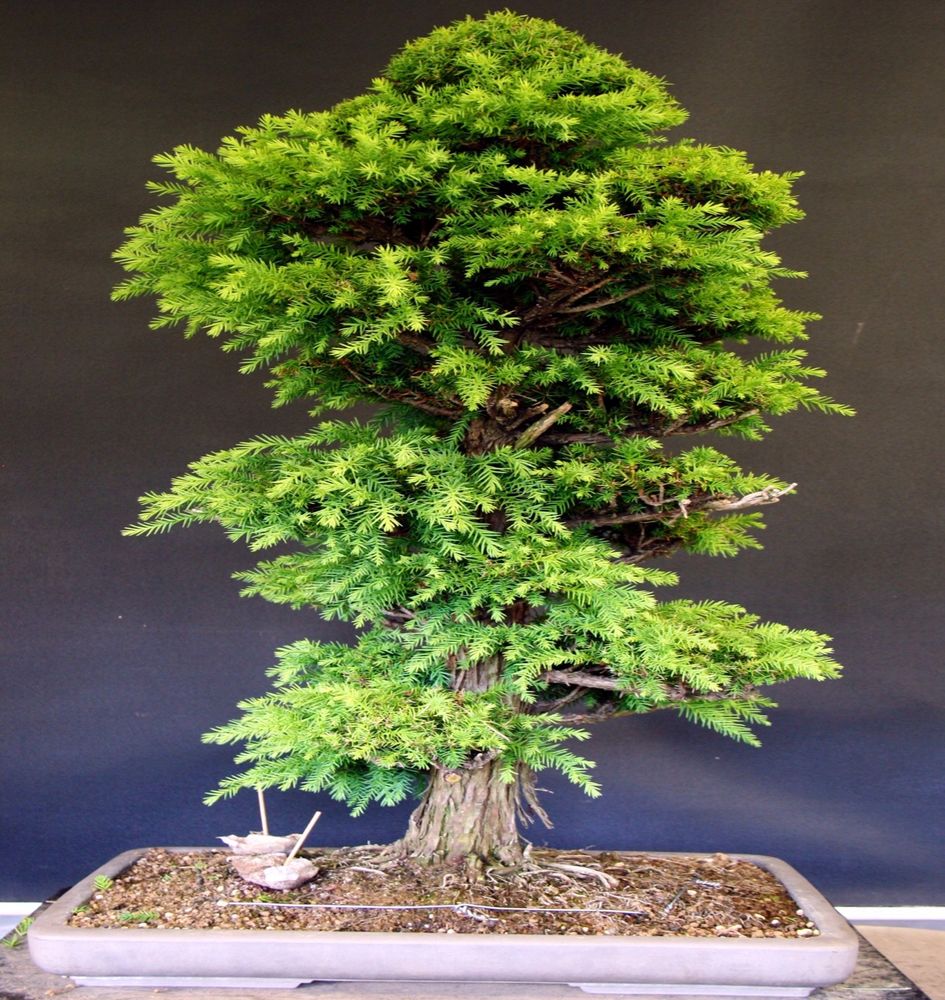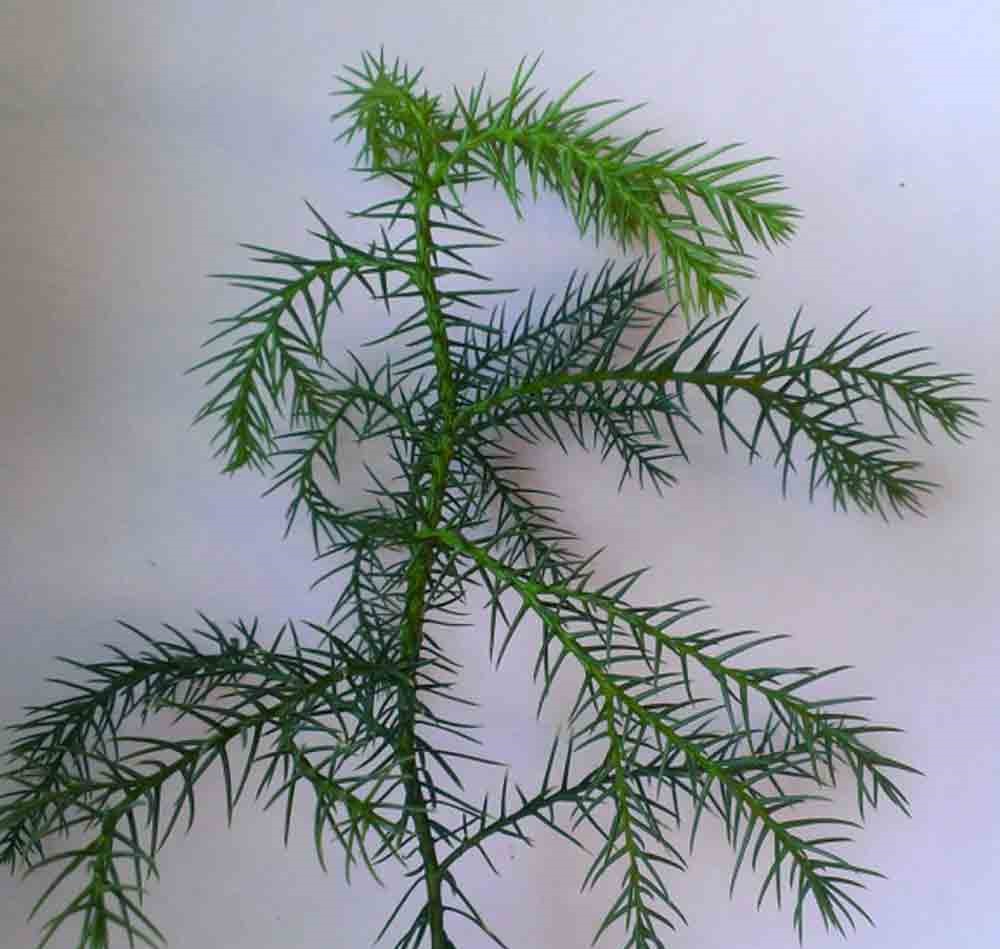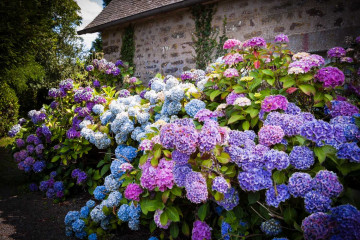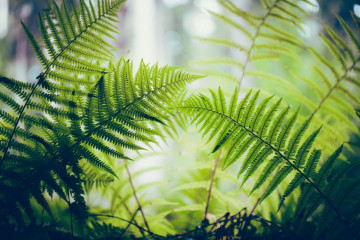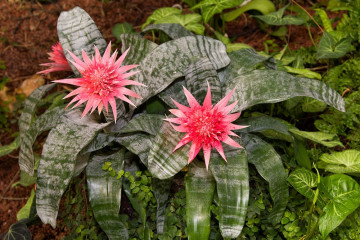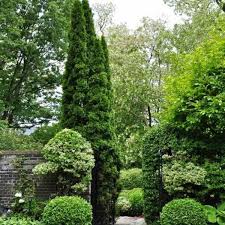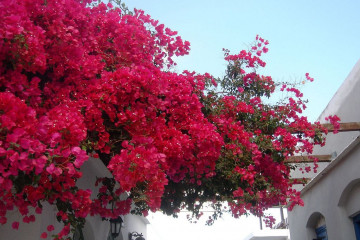Cryptomeria Japanese - indoor and outdoor cultivation
Content:
Japanese cryptomeria is considered the national tree of Japan. It is an evergreen tree that grows in the north of the mountains and plains. It is also used for landscaping, planting in parks and forest plantations.
Description and characteristics
Cryptomeria is one of the oldest plants on the planet. It grows naturally in Japan and China. The appearance resembles something ancient, so it is used to create an oriental garden. In Europe, they began to grow only in the middle of the 19th century.
Under natural conditions, a tree can grow above 60 m and live for more than 150 years. The crown has the shape of a pyramid. The branches are dense, light - or dark green in color. Female and male spikelets grow on the tree.
Currently, a large number of varieties have been bred that can be grown not only in natural conditions, but also in a greenhouse, even at home. Varieties have been cultivated both for regions with a mild climate and varieties with high frost resistance. On the territory of central Russia: in Kaluga, the Volga region, the Kostroma region, a plant can only be grown in a pot. One of the most versatile and most beautiful varieties is Japanese Cryptomeria Elegance Viridis.
Elegans Viridis
It looks good in every garden planting. Its characteristic feature is the ability to adapt to any weather conditions.
This is a coniferous plant with a pyramidal crown. The color of the needles depends on the season: in summer it is green with a brown tint, in autumn it is bronze or violet-red. Cones rarely grow.
Prefers sunny or partial shade. Grows well in fresh peat soil. It grows slowly, but under favorable conditions, the height can reach 7 m.
Home cultivars
Japanese Cryptomeria is an amazing coniferous plant that grows well at home. It not only disinfects the air, but also decorates the living space, can easily replace a Christmas tree.
Many varieties can be grown at home, there are the most popular ones.
Bandai-Sugi
This dwarf tree, at a young age, has a rounded shape. It grows slowly. Over time, it looks like a small bush. The maximum height is 2 m. The needles are blue-green in color; in cold conditions they become bronze.
Nana albospica
It is a dwarf tree that has white shoots at a young age. As they grow, they turn green and are exposed to sunlight. A characteristic feature is the annual growth.
Vilmoriniana
This is a bonsai indoor cryptomeria. It has a spherical crown, which grows by 3 cm annually. The plant is unpretentious.
Home care
To grow cryptomeria at home, it is enough to follow the recommendations for temperature and light conditions, choose the right place and maintain a certain level of humidity.
Temperature and light conditions
Although cryptomeria came to Russia from a warm country, it needs moderate temperatures at home. The optimal temperature regime for summer is + 18-22 degrees, for winter - from +6 to +12 degrees.Small deviations in one direction or another are permissible.
It is best to send it to a glazed loggia for wintering, to take it outside in the summer. Just do not leave in the sun, it is better to place a little in the shade.
At home, the tree can be placed on the windowsill on the west or east side. The lighting should be adequate, but direct sunlight should not hit the plant.
Watering and moisture
For the successful growth of cryptomeria, it is necessary to maintain a humidity level of 60 to 80%. In a private house or apartment, the humidity is less, therefore it is increased:
- Use a humidifier;
- Spraying the plant;
- The cryptomeria container is placed on a wet sand pallet.
When watering, they are guided by the rule: the soil should always be moist, but without stagnant water. In the summer they water when the soil dries up. In winter, less often, about once a week. Water is taken at room temperature. You can not use water containing calcium, from it the soil becomes alkaline, this is unacceptable for conifers.
The soil
For a plant to grow well, you need a fertile soil with good air and moisture permeability. The soil balance should be in the 5-6 range. To prepare the soil, peat, turf soil and sand are taken in equal proportions. With insufficient acidity of the soil, coniferous soil is added.
During the season, 2 dressings are carried out. If the plant is transplanted, then after the transplant, feeding is carried out after 2 months. They use special fertilizers for conifers, but the dosage is halved. Both dressings are carried out in the summer.
Pruning
To give the crown of the tree the desired shape, pruning is carried out. The tops of young twigs are periodically pruned, then the crown will be more lush. To make the plant look more like a tree, cut the lower branches and side shoots. In spring, bare and broken branches are removed.
Reproduction methods
In nurseries, in most cases, seedlings grown from cuttings are sold. You can propagate the plant with seeds, but this process is quite laborious. Reproduction is also carried out by layering.
Cuttings
The most popular breeding method is cuttings.
The optimal time is the end of summer. It takes several steps:
- Cut off the top of a non-lignified twig.
- The bottom of the cutting is cleaned of needles.
- Placed in a rooting stimulant for 10-20 hours.
- They are planted in a container with prepared soil mixture.
- Cover with a film.
Growing from seeds
This method is used when you need to get a lot of plants at once, for example, for sale. Time - end of February - beginning of March. Seed germination is high.
The procedure takes place in the following stages:
- Prepare a container for planting. Drainage is laid at the bottom. Fill the top with a peat-sand mixture.
- Moisten the soil.
- Seeds are sown, keeping a distance of 3-4 cm between them.
- The seeds are slightly stuck into the soil.
- Cover with a film.
- Put away in a warm place.
- After the sprouts appear, the container must be opened.
- When the sprouts get stronger, they are transplanted into separate pots.
Layers
Garden plants are propagated by layering. Thin twigs are suitable for these purposes. The place where they will be sprinkled with earth is cleaned of needles. Shoots tilt and drop in, watered. Make sure the soil is always moist.
In the spring, a young plant can be planted. Young plants do not have sufficient winter hardiness. Such reproduction is not possible in every region.
Pot transplant
Japanese Cryptomeria grown in the garden is not transplanted.Indoor plants can and should be transplanted as needed. This is done no more than once every 2-3 years.
They are transplanted by the transshipment method. Take a pot larger than the previous one by 3 cm in diameter. Drainage is laid at the bottom and a tree is loaded. The remaining voids are filled with potting soil.
Growing problems
Thanks to the phytoncides secreted by cryptomeria, most pests and diseases bypass it. Most of the problems are associated with improper agricultural techniques.
Intensive growth at home
Occurs from planting in a large pot and over-feeding.
Yellowing and falling of needles
Problems with needles can be triggered by exposure to direct sunlight, insufficient air and soil moisture. Slow development occurs due to watering with hard water, as a result of which the soil becomes alkalized.
Diseases and pests
Although cryptomeria is immune to most pests, it can be susceptible to fungal infections. They arise due to excessive watering. The death of a plant occurs when the temperature regime is violated and there is no rest period.
It is not difficult to grow Japanese cryptomeria at home. The main thing is to follow the recommendations for watering and temperature conditions, as well as choose a landing site where direct sunlight will not fall on it. Then the tree is not afraid of pests or diseases.
Video
